2021 Kitchen Excavation Blog
Check back for regular updates
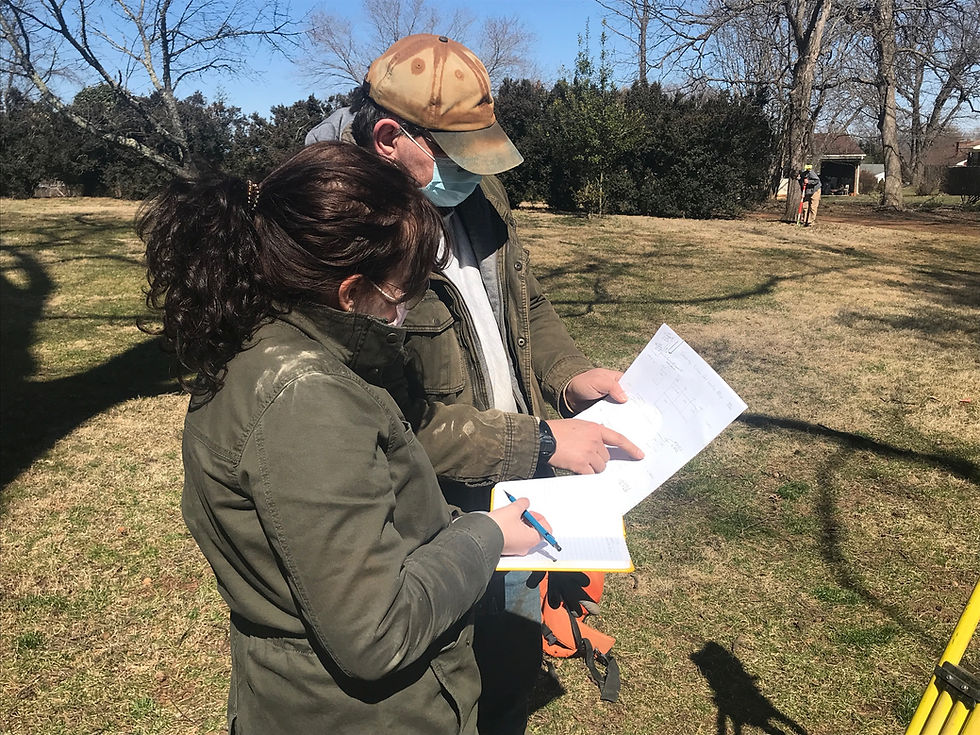

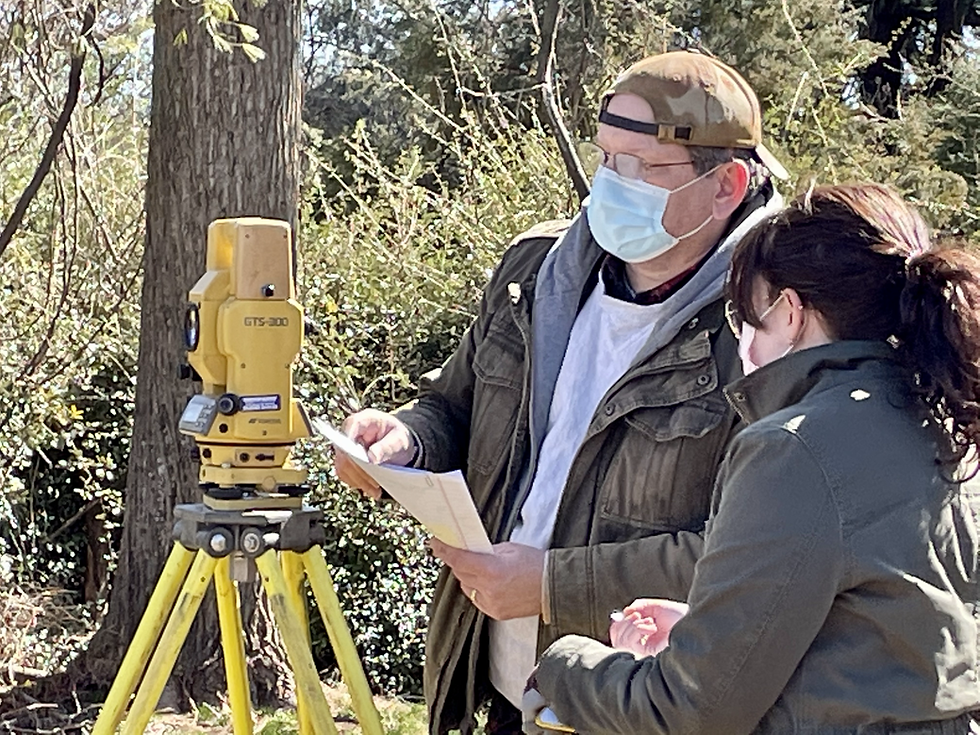


Day one, 3/5/2021 Added by Jess Ganzert
Today we worked on getting everything set up. What we thought was going to be the biggest obstacle of the day was finding the previous excavation units that were filled back in after the field schools ended in 2013, 2014, and 2015. By a stroke of good fortune, the nails and boundary strings were still intact and able to be recovered! We chased the strings to find the nails, and only had to geographically locate two units out of ten. After that, we began the process of removing the backdirt from the units so we could expose the previous work done.
At the end of most digs when you know you or someone else will be coming back to the site, archaeologists place black plastic tarps at the bottom of their units so it’s easy to return to. We hunted for the plastic and were able to get down to that level in four units so far.
Our next move on Wednesday 3/10 will be to continue removing the backdirt from the field school units before we move on to removing the rubble fill layer that seals the foundation of the kitchen.

Day two, 3/10/2021 Added by Jess Ganzert
Today we finished digging out the units from the previous field schools, and began removing the next part. We’re calling the next layer of soil in the open area block the “rubble fill layer” because it is one layer that is about ½ foot deep that seals the foundation of the kitchen, and it was created when the kitchen was demolished in the 1920s. When the kitchen was torn down, the walls were bulldozed and the soil was graded so it would sit as flat as possible and hide the foundation. However, this has created a large, thick singular layer of soil that has been tossed together. We removed about an inch of the rubble fill layer from part of the open area block, and will be taking down the entire block in inch thick sections until we hit the brick foundation.
Robbie came out to volunteer with us today, and she did a great job, you would’ve never known she was a first timer! She is a biomed major with a special interest in history, and is actually entering the Navy National Guard this summer and will be stationed in Roanoke for the next school year. Even though the work was rough, she’s excited to come back again! Eric did a great job today too and really kept the dig going at a quick pace, pushing us all to plow through roots and mud without pause. We also got several special visits from UL professors and Professor Vogler’s archaeology lab methods course who were super excited to see the early stages of our dig. They’ll be processing some of the artifacts we hope to be pulling up here soon! We’re oing to be removing the rubble fill layer for many days to come, and hopefully we’ll find more intact walls as we go!


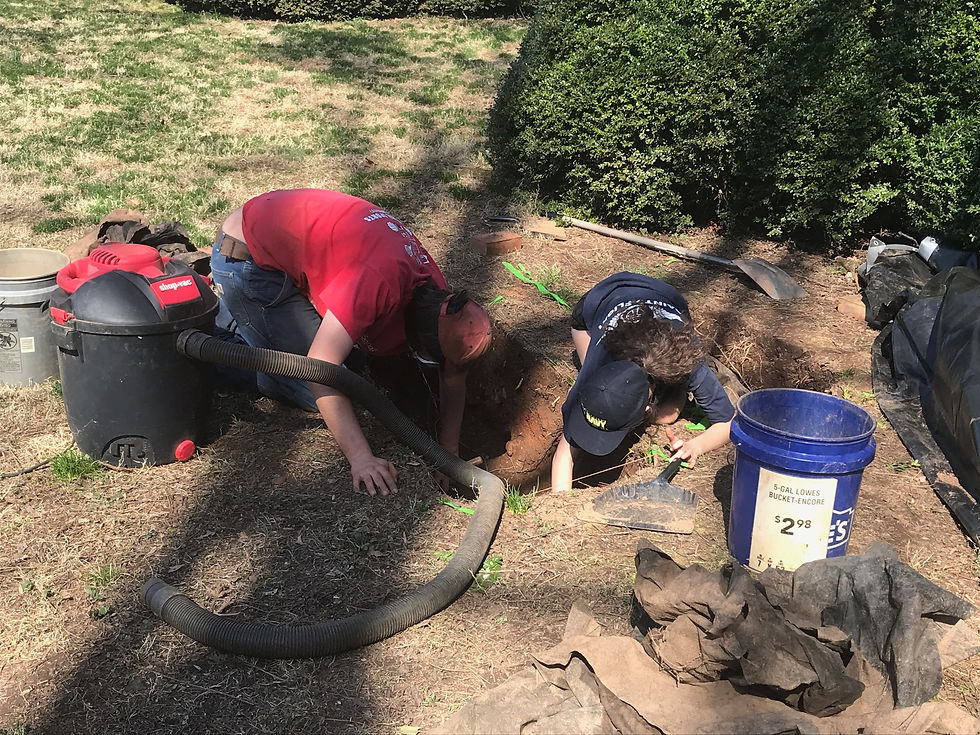

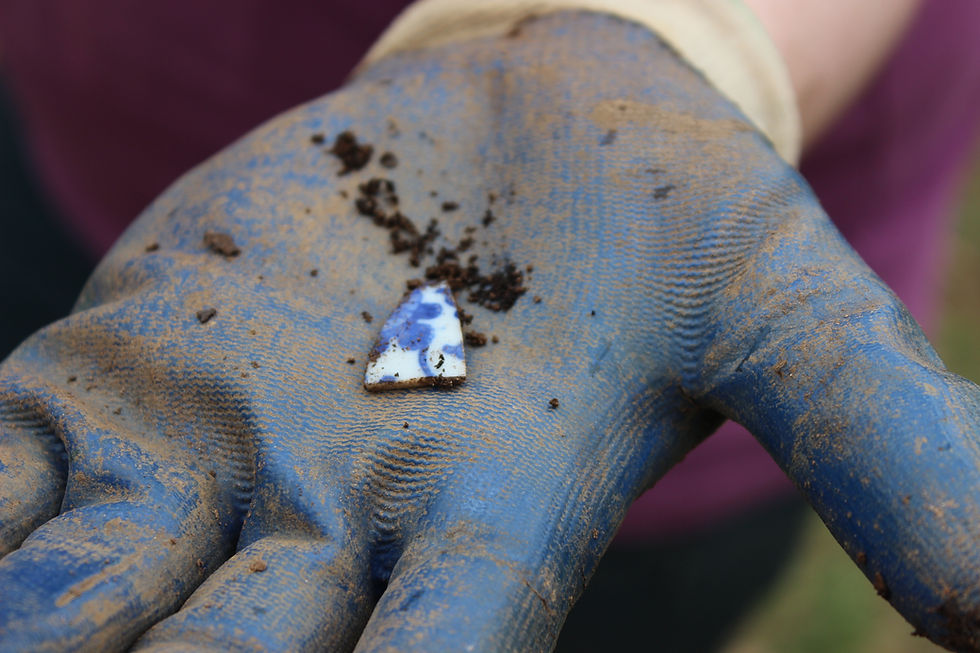
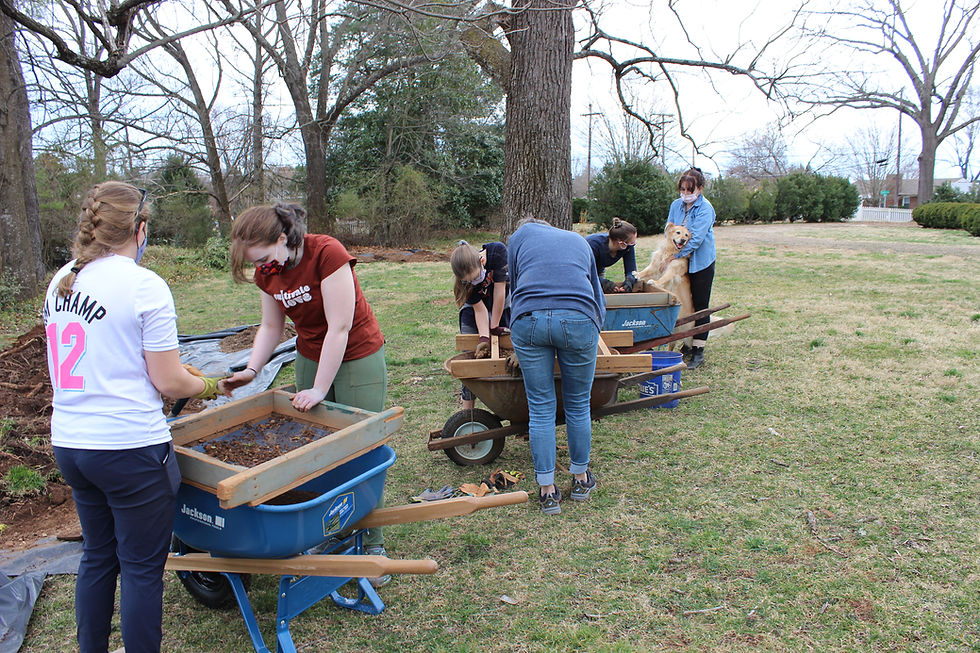
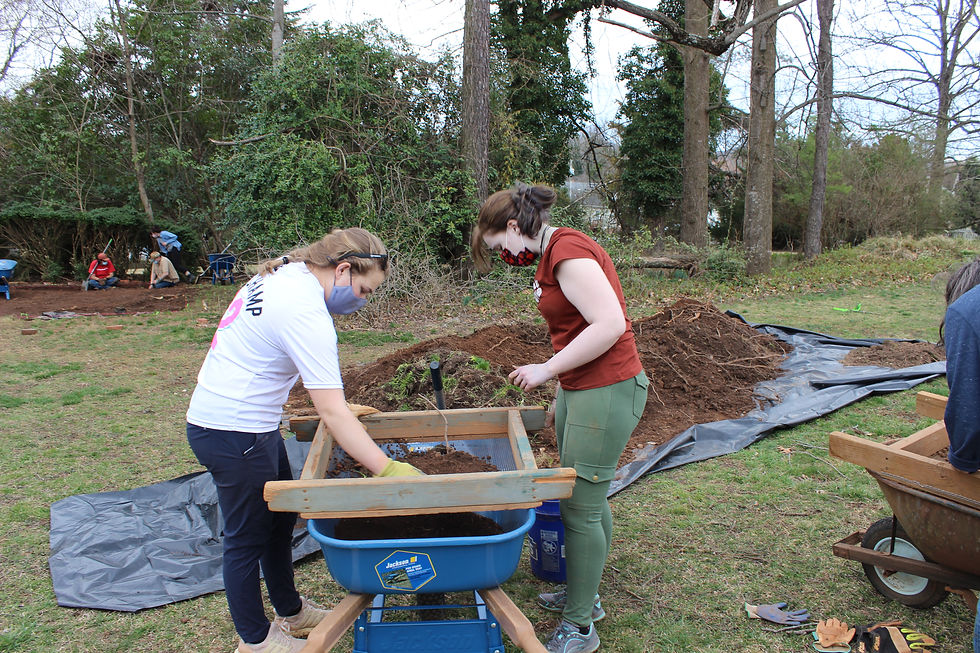

3/12/2021 added by Jessica Gantzert
Today was another busy day! Alyson came out and volunteered with us in the morning while we continued to remove the rubble fill layer. We had short bursts of rain come throughout the morning and they threatened to run us out, but we pushed through it and made a lot of progress. Alyson left us after lunch, but Mikayla and Amanda came and took her place digging in the afternoon, and along with Professor Vogler and Eli the grad student helping screen the artifacts, we were able to clear almost half a foot of the rubble fill layer! We are now almost down on top of some of the brick rubble in parts of the open area block. Once we get down past the brick rubble and into the foundation we will cordon off the open area block into 16 smaller blocks that are 5 x 5 feet in order to keep any artifacts from before the destruction separated from the other artifacts. We found some awesome artifacts today, like a gilded tea cup piece that is likely Victoria era and part of a window frame that is likely from the original kitchen building.
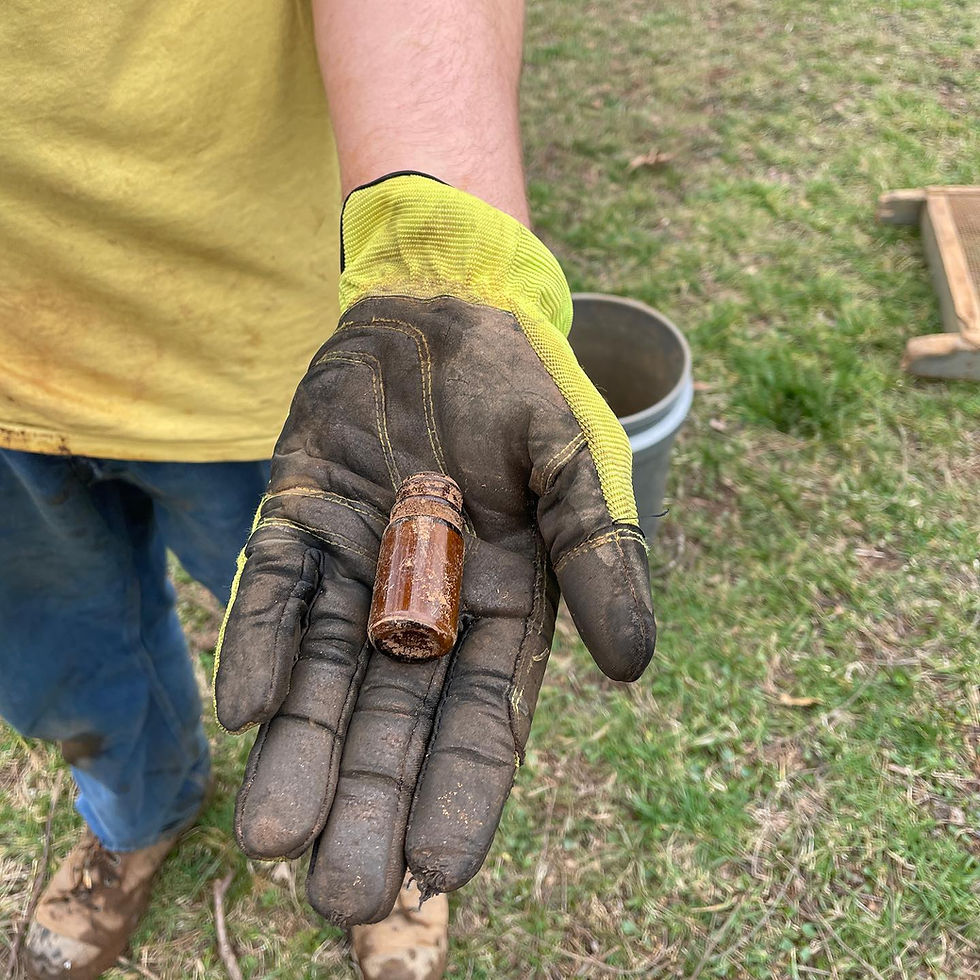
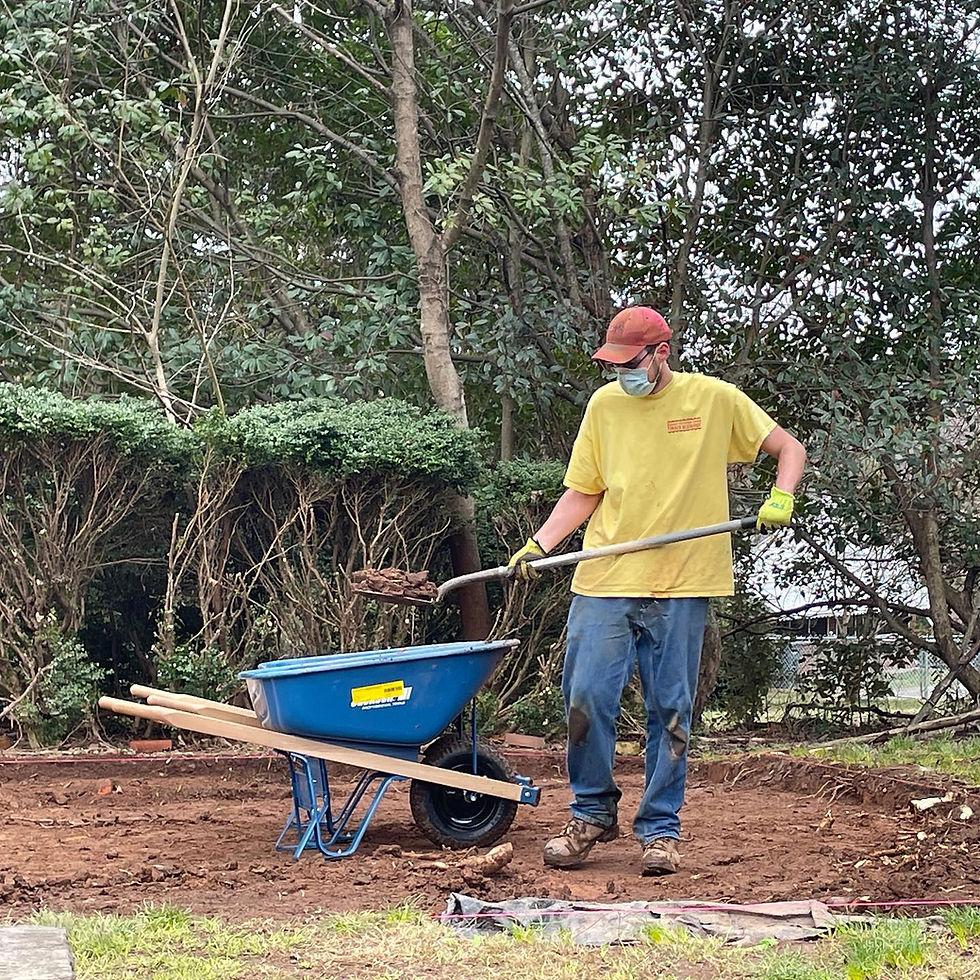


3/17/2021 added by Jessica Gantzert
Wet weather scares away a lot of people, but never us! We resumed our digging today and got one layer closer to the brick foundation found in previous excavations. We didn’t find a lot of artifacts today, but we did find a brass buckle that could’ve been from a boot or a child’s belt and a whiteware sherd that was decorated in an annular pattern with stripes. Annular ware ceramics were created when factories had the abilities to quickly and precisely mass produce ceramics for mass market consumption. We also found two possible post holes filled in with mortar inside the building, that we will be excavating soon and hopefully finding some great artifacts from the kitchen occupation buried inside them! There is still tons of dirt waiting to be screened for more cool artifacts, so if you’re a student and want to get out of the dorms for a little bit, come sign up and join us!


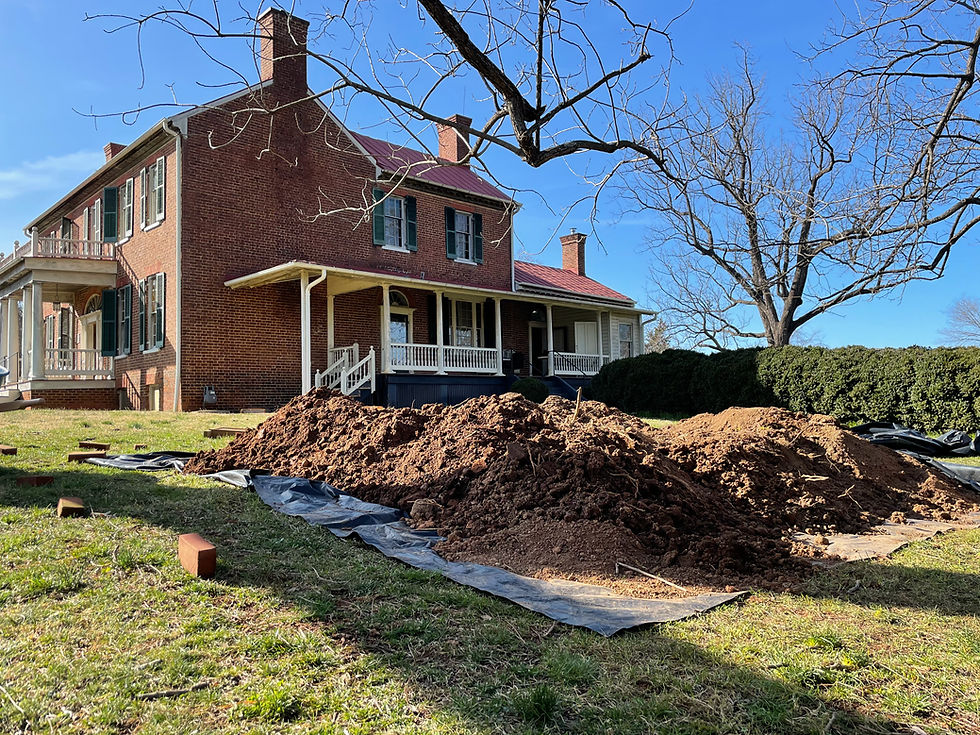

3/29/2021
It was a damp morning, but we were luckily able to get out and dig in the afternoon. Daniel came out a little later in the day and helped us screen through the massive amount of rubble fill we have, and he found some great artifacts! He found a small amber bottle and more of our annular pattern whiteware. If we keep finding more of these unique, colorful ceramic sherds, we might have enough to mend together! We’ve taken about half of a foot of dirt out across our open area block and we are starting to hit subsoil in eastern half. We were expecting to find more intact foundation walls in that part of the block, but we haven’t uncovered the whole area yet so the walls can still be buried a little deeper down. We didn’t find any more post holes like we did last Wednesday, so they are still a mystery to us. In the next few days, we will finish removing the rubble fill layer, remove the post holes, and then begin to consider our next moves.


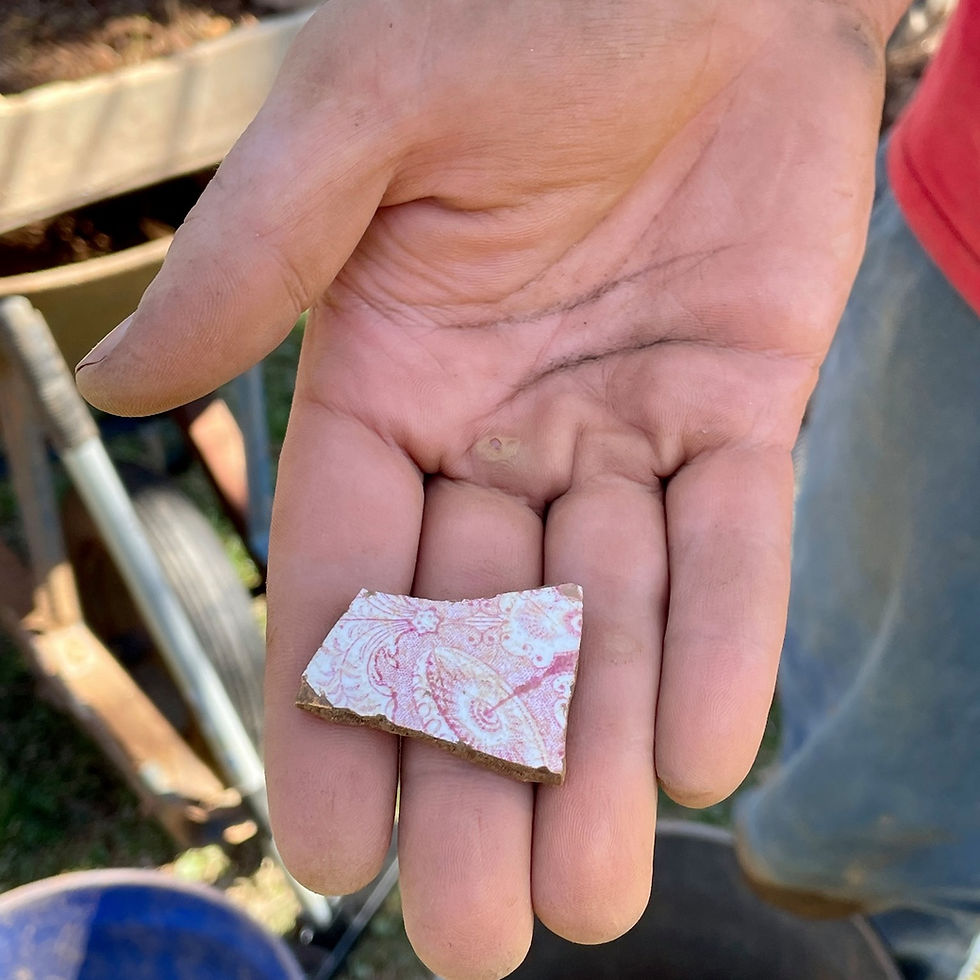

Friday, March 26th, 2021, added by Randy Lichtenberger
Today the kitchen excavation project entered a new phase as archaeologists completed the removal of a large amount of 20th-century destruction rubble across the 20ft. x 20ft. block. By afternoon the excavation was divided into sixteen square 5ft. x 5ft. units using nails and string. This will allow the team to trowel away the final bits of modern destruction debris to reveal potentially intact cultural features below. One of these is the partially intact brick foundation wall along the east edge of the block excavation. Work started in the southeast corner over the section of wall identified previously during Historic Sandusky’s archaeology field schools (2013-2015). H&P archaeologists have identified brick rubble fill overlying this wall, the former east kitchen foundation wall, along the full length of the block excavation. Next week, we’ll be continuing with the excavation of the rubble along the wall line.
Some exciting artifacts were recovered by the volunteer screening corps today, too! Among them is a U.S. military button from the 1820s-1850s that theoretically could have belonged to former Sandusky owner George Hutter. It is the second button recovered from the Sandusky property from that time period. Other artifacts of note were several sherds of ceramic with partial maker’s marks and a decorative clothing rivet that may contain lettering. Thanks to students Daniel, Emma, Mikayla, and Sandusky director Greg for helping with today's dig!

Friday, April 2, 2021 Added by Randy Lichtenberger
Despite an early spring freeze and an icy wind, we made a huge discovery at the kitchen excavation today! Since 2013 the team has predicted the kitchen’s location based on early 19th-century insurance sketches and the discovery of a short section of intact brick foundation that same year. The intact bit of foundation runs north-south and was presumed to be the east wall of the 32x16-foot structure. Today, however, as we were finally able to expand excavations around the wall, we discovered a corner and found that it turns eastward instead of westward. That means the entire structure lies to the east side of our excavation, not the west. The heavy concentration of brick rubble to the west of the structure coupled with the fact that there are mature boxwoods and small trees growing to the east managed to fool us up to this point! Now our job will be to work as quickly as possible to complete the current block excavation and start testing the revised location. Plans are underway to remove the 20th-century trees growing on top of the foundation so that we can search for corners and internal features such as the chimney.

Wednesday, April 7, 2021 Added by Jessica Gantzert
Today was a beautiful day for some excavation, and we had lots of people come out to help. The actual digging has slowed down now that we’ve reached the bottom of the open area block, but the screening has sped up. We had lots of ceramics, nails, and we also found more cranberry transfer print whiteware ceramics that we hope we can eventually mend into a larger piece. Our plans for tomorrow are to finish cleaning up the block and then drawing it with details on the exposed wall and the features before moving on to excavate the features individually. We also had students from a Museum Studies class visit the dig site today!

Thursday, April 8, 2021 Added by Jessica Gantzert
Today was another beautiful day for digging! We worked today to get the open area block cleaned up with a final trowel scrape across the whole block so we could get clear pictures of the site. We saw a lot of promising features! Those are going to be excavated individually by taking a small hand trowel and carefully removing the feature from the surrounding soil. They are also going to be screened separately from the other soil that was removed from the site in order to keep all the artifacts associated with the features separate. We do this because the features were created from a different event than the rest of the site, so they can give us information about other events that happened besides the destruction of the kitchen.

April 14, 15, 2021 Condensed Journal Added by Jessica Gantzert
This week we have been continuing our work excavating the features and screening the dirt from the fill layer. We have found that the large features were most likely created by a machine when the kitchen was torn down in the 1920s, but there are still some post holes that could hold valuable information. Our student volunteers have been helping tremendously and have found some great artifacts! We have nearly enough cranberry transfer printed whiteware that we might be able to mend a few pieces! We also found a pretty thimble that is in great shape, and another great candidate for conservation!


